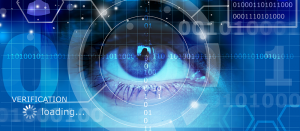Is disruption dying?
In the tech world, everyone values the idea of a disruptive technology. Uber and Lyft disrupted the taxi industry. Online booking sites disrupted the travel industry. PayPal disrupted banking. Disruption led to billions of dollars for those companies, and now every tech company insists that it’s disrupting something.
Today, disruption feels like a synonym for “chaos.” The public is being barraged by new tools and ways of doing things, yet only a handful of technological advancements have dramatically changed our lives. If everyone is disrupting, no one actually is.
Biometric authentication, however, is one of the most quietly disruptive technologies we continue to use. But the technology’s long lifespan means people forget how biometrics has disrupted our lives and how it’s continuing to do so.
Single-Step Authentication with Biometrics
The password deserves to die. Unfortunately, its public death has been painful and prolonged. Biometrics may finally put it out of its misery.
Back in the Dark Ages, the world’s people used a pin code to lock their cell phones (if they used one at all, the horror). Then Touch ID was released in 2013, signaling the mass adoption of mobile fingerprinting. By 2016, nearly a quarter of surveyed mobile phone owners used a fingerprint scanner. Those scanners don’t just allow users to unlock their phones – users can also authorize purchases on their phones and access sensitive information on their device or the cloud.
On the surface, it seems like biometrics simply replace a step in the authentication process. Instead of using a username and password, we rely on a biometric feature. The speed of that single step streamlines the login process. But that one step actually combines two important processes. In a single step, biometrics guarantee both authentication and authorization. This does more than speed up authentication – it’s what makes logging in more secure.
FREE WEBINAR: Blockchain, Biometrics, and the Future of Financial Services
Safety First, Disruption Second
Passwords are limited in how much they can secure a system. Various security breaches in 2017 demonstrated that our cybersecurity systems are broken, and people’s password habits aren’t helping.
Biometrics solve many of the problems that individuals and enterprises face with security. If a username and password are all someone needs to access an account, then it doesn’t matter who is actually behind the screen. In other words, passwords can give you access, but they can’t prove you are who you say you are.
That’s what truly makes biometrics special. Passwords authorize, but biometrics handle authentication and authorization in a single step. Your biometrics prove your identity, and this, in turn, determines whether or not you’re an authorized user.
Now What?
The questions surrounding the future of biometrics are particularly interesting for two reasons. One reason is that speculation is always fun. The second is that biometrics is an example of long-term disruptive technology.
That sounds like an oxymoron but think about it. Biometrics have disrupted banking, law enforcement, and cybersecurity, and that disruption has happened over the course of many years. Basically, as long people find new and useful applications for it, biometrics will continue to be disruptive.
Will that mean scanning your iris to get into your home? Will it mean using fingerprints instead of Social Security numbers? Could we use our faces to access our medical records? The questions come easily, which means disruption isn’t dead just yet.





